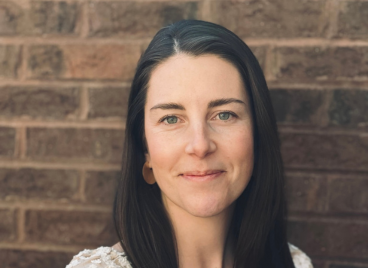Making Built Environments Sustainable
 Name: Jeanie Johnson
Name: Jeanie Johnson
Title: Director, Sustainability
Segment/Site: Corporate Services, Colgate Palmolive
Years with Sodexo: 6.5
Areas of expertise: Sustainability, best practices, waste reduction
Jeanie Johnson has led sustainability initiatives in Corporate Services and Seniors, overseeing LEED certification projects and working to embed CSR in client sites. Now, she serves Sodexo’s Global Strategic Accounts, a collection of international pharmaceutical and manufacturing sites. Here, she discusses best sustainability practices in foodservice and facilities management.
Interviewer: What makes you passionate about CSR and sustainability work?
Jeanie Johnson: Outside of work I love spending time outdoors – hiking, running, gardening. I get a lot of joy in the natural environment, and I want these opportunities to be there for future generations. Growing up, my family owned a construction business, and I went to job sites with my dad and built things in the garage together. Now, that experience helps me understand how facilities works. It’s come full circle, to be working in the built environment. Now I am asking, how can I help improve our natural environment through the built environment? How do they impact each other? I love doing work that makes an impact and seeing our efforts turn into action. I believe sustainability is everyone’s job. Just because you don’t have a sustainability title doesn’t mean you can’t participate.
Interviewer: What is the most satisfying or impactful CSR project you’ve worked on?
Jeanie Johnson My favorites have common threads, combining technology, efficiency and improving site service. I like to pilot innovative programs. The road can be very windy; you have to be resilient. Then, taking a proof case and being able replicate it. Right now, we’re doing a cool project with building management systems, helping operators make data driven decisions through energy analytics. We also created a service line vs. environmental impact category tool that provides operators with best practices and recommendations, bringing together good ideas in one space. It offers tangible recommendations, whether you’re new to sustainability and taking first steps, or more advanced, specific to the Sodexo onsite services. It also compliments our SEA for a Better Tomorrow tool, which we use companywide to collect data on our energy, waste, water and food.
Interviewer: How can Sodexo’s Better Tomorrow Commitments help our clients reach their sustainability goals?
Jeanie Johnson: Often our clients’ environmental goals are aligned with Sodexo’s Better Tomorrow Commitments. We also have synergy around our goals for DE&I, from women in management and community impact. Sustainability is a really interesting way to grow the client relationship beyond onsite services. It elevates the partnership into a trusted relationship, as you can weave sustainability practices from one area into another. You can have new conversations. Having a designated sustainability position is a differentiator, but there are many ways to address this topic. In food services, for example, you can do a lot on packaging, composting and reducing food waste, using our Waste Watch by Leanpath tool. And janitorial services has a clear line to impact on waste programs. Each region and segment have different challenges, so we share best practices and ideas through our CSR Better Tomorrow Community of Practice – a group of leaders interested in sustainability that meets monthly.
Interviewer: What should companies be doing to truly move us toward a healthier planet?
Jeanie Johnson: Science-based targets are critical. And then partnering with each other or connecting departments internally, sharing best practices. We can’t stay in our own lanes when it comes to the planet; we need everyone engaging. You’re going to get a better end result by sharing different ideas, solutions and experiences. Companies also need to help employees across the organization realize they all have a role to play in sustainability, from procurement to the frontline to communications. We need to enable that.